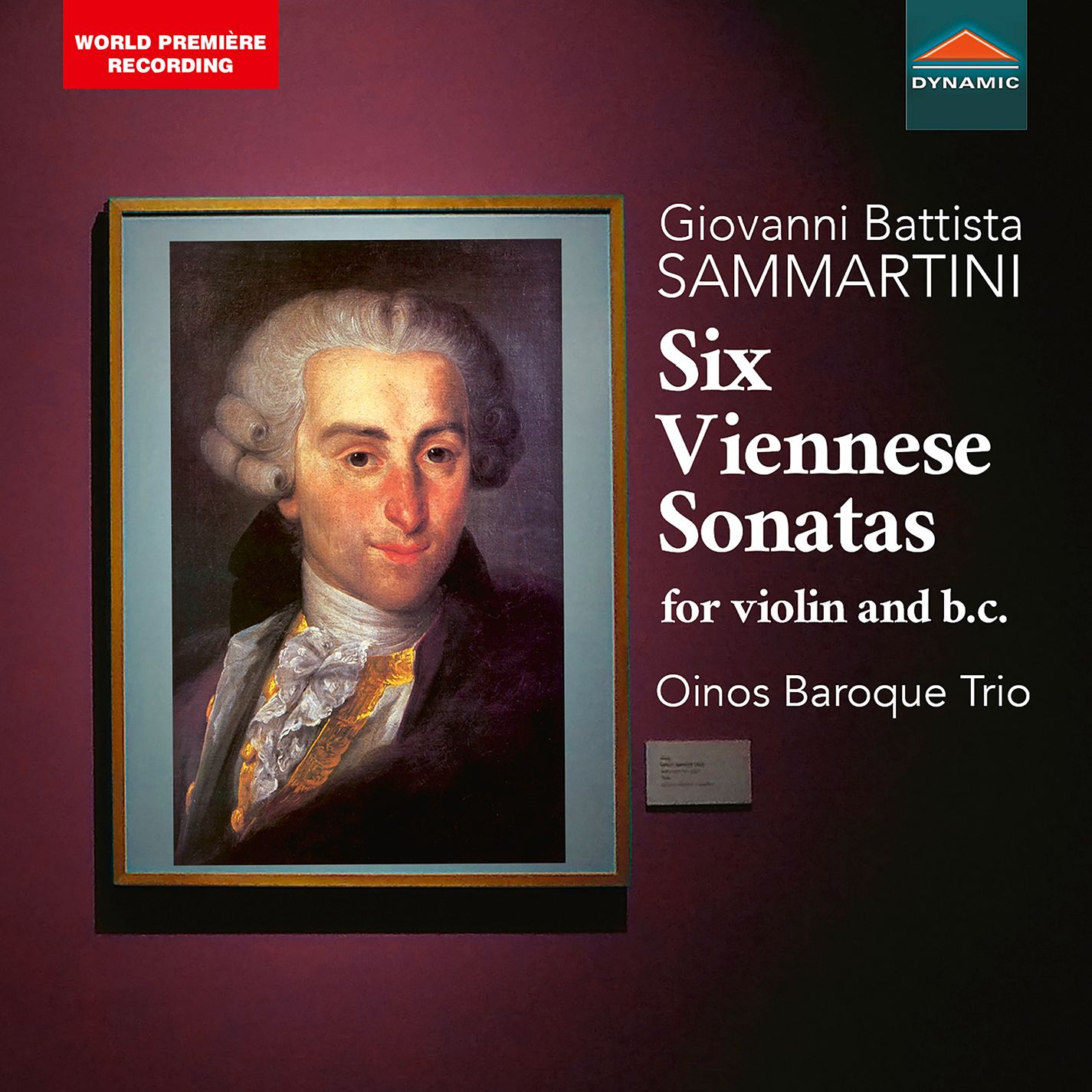Sammartini’s Six “Viennese” Violin Sonatas
There is a real sense of sophistication about these works, reflecting the refined Milanese taste of the time.

Giovanni Battista Sammartini (born Milan, either 1700 or 1701; died 1775) attained a leading role in his home town’s music scene in the 18th century. His dates span the height of the Baroque era to the Classical worlds of Mozart and Haydn.
These are World Premiere recordings of six Sonatas that show characteristics of Sammartini’s early period (including a four-movement example that recollects archaic church sonata form, the Sonata da chiesa). The manuscripts for these sonatas, held inthe Austrian National Library, were transcribed by Carla Zosi; all six sonatas hail from Sammartini’s early period
The music is supermely well constructed. The First Sonata is the only one to open with two slow or slowish movements: after an eloquent Andantino, we move to a beautiful, fabulously expressive Largo. Violinist Stefania Gerra (playing on an Amati copy by Roberto Collini) “sings” the Largo aria, delivering its decorations and diminutions as if extempore:
The concluding Vivace is buoyant, although I am more aware of the generous acoustic of the recording venue there - the Sala dei Titani di Palazzo Arese Borromeo, appropriately enough in Milan.
When it comes to the G-Major, there is no doubting the joy in the jaunty opening Allegro. The movements throughout are short, between two and four minutes each; in teh case of the opening Allegro here, I for one wish there was more:
The central Largo is magnificent, and includes some remarkably effective stopping, beautifully, naturally delivered by Gerra. Daniele Bogni's cello bassline is remarkably sensitive, too, as is Somonetta Heher’s harpsichord delivery (although she is placed perhaps just a shade back in the sound image).
Time for a full instrumentarium (you'll see why in a moment): as we have seen, Stefania Gerra, the violinist, plays on an Amati copy; the cellist, plays on a baroque cello by Daniel Wickström, 1811; the keyboardist, Simonetta Heger, plays on a harpsichord by Carloe Mascheroni, a copy of a 1720 Vater,with A at 415 kHz and a Mascheroni copy of a Nanette Streicher fortepiano, with A = 430.
It is fascinating thst the Sonata No. 3 in A-Major is played with fortepiano in the continuo group (and clearly a good one, too) - it moves towards the Classical style more, although as so often in these works, the violin part is ornate in the first movement (Sammartini wrote the line down in minute detail, in contrast to some of his contemporaries):
The finale of this Sonata is wonderfully bright and breezy, and feels to my ears more early Classical than late Baroque:
With the Fourth Sonata, we move back to the old Sonata da chiesa form (slow-fast-slow-fast in its movements - here Grave - Allegro assai - Grave - Presto); it also includes two short cadenzas at the end of the second Gave (a device not found in the other sonatas). Who could resist the poignant first Grave?:
The second Grave (an obsolete marking by this time so a clear referencing backwards) is if anything more expressive, and the Oinos Baroque Trio finds just the right unhurried pace, balanced by the spricghtly final Presto.
Violinist Stefania Gerra, who obviously has the lioness’ share of the work here, is remarkable in her consistency of style and, importantly, tuning, even in the tricky first movement of the Fifth Sonata (B flat-Major). It is the solo ruminations of the Affetuoso central movement that I find both Gerra and, indeed, Sammartini himself, so impressive:
Finally, the Sonata No. 6 in G-Major, like the Third, is predominantly Classical in style, as one can perhaps hear in some ofthe decorations of line:
(once again, it is the fortepiano that forms the keyboard element of the continuo group). The finale, an Allegro, is brilliantly wide-ranging, full of life but with not a hint of frippery:
There is a real sense of sophistication about these works, reflecting the refined Milanese taste of the time; there is an equal sense of sophistication about these fine performances.
